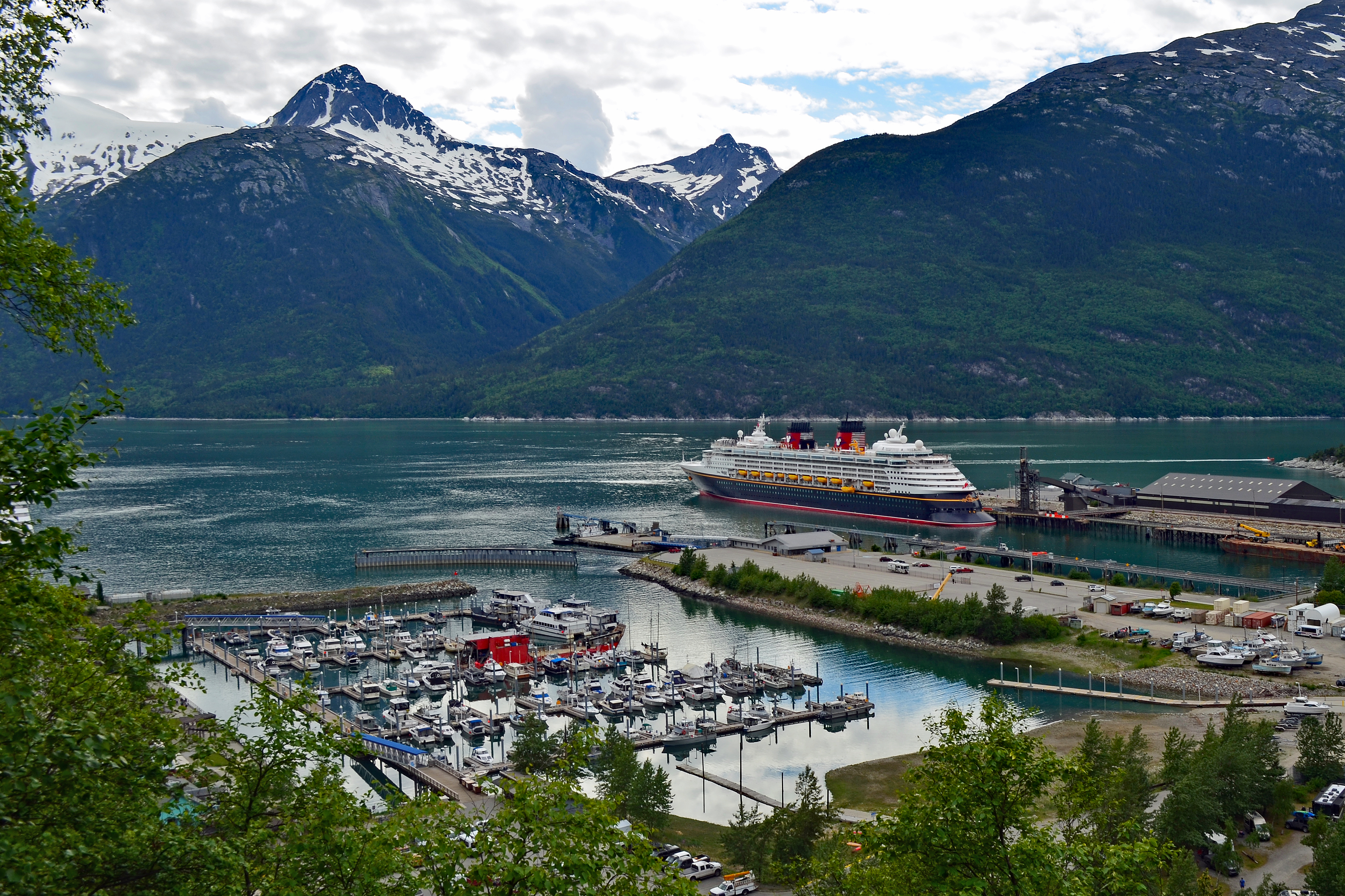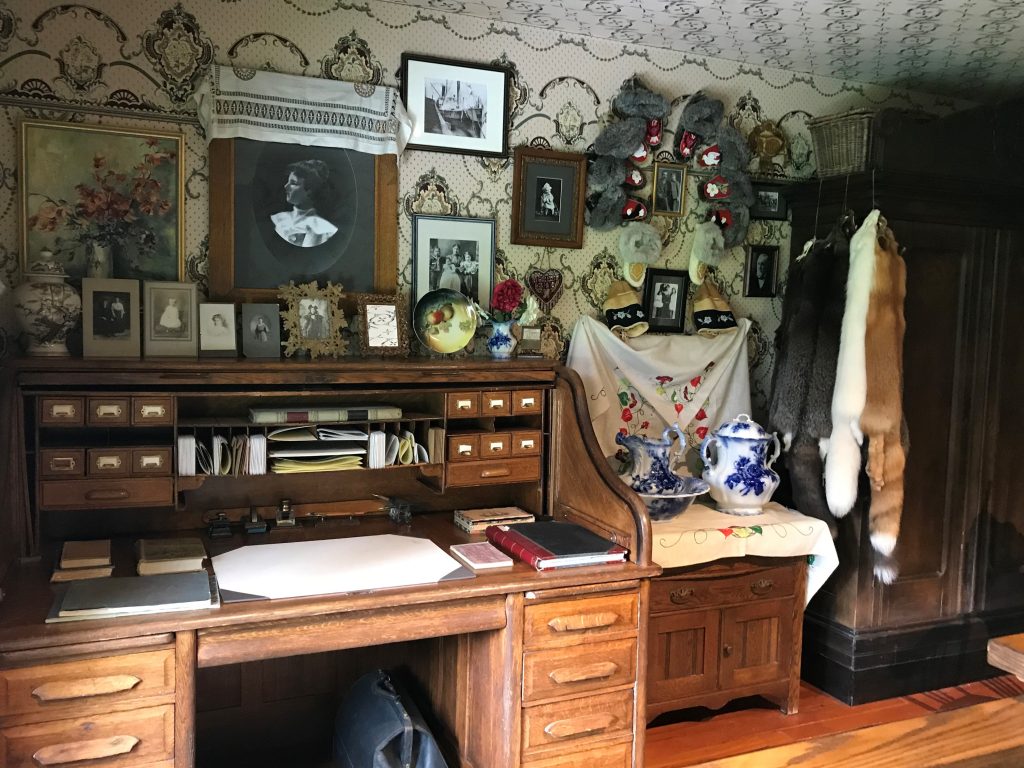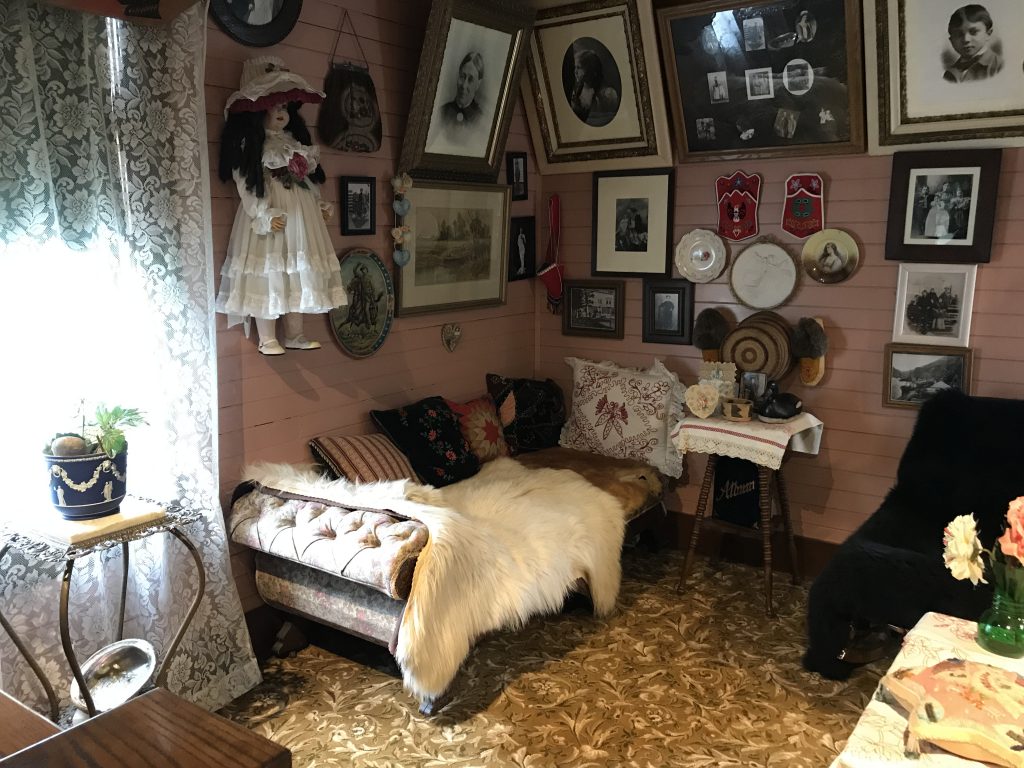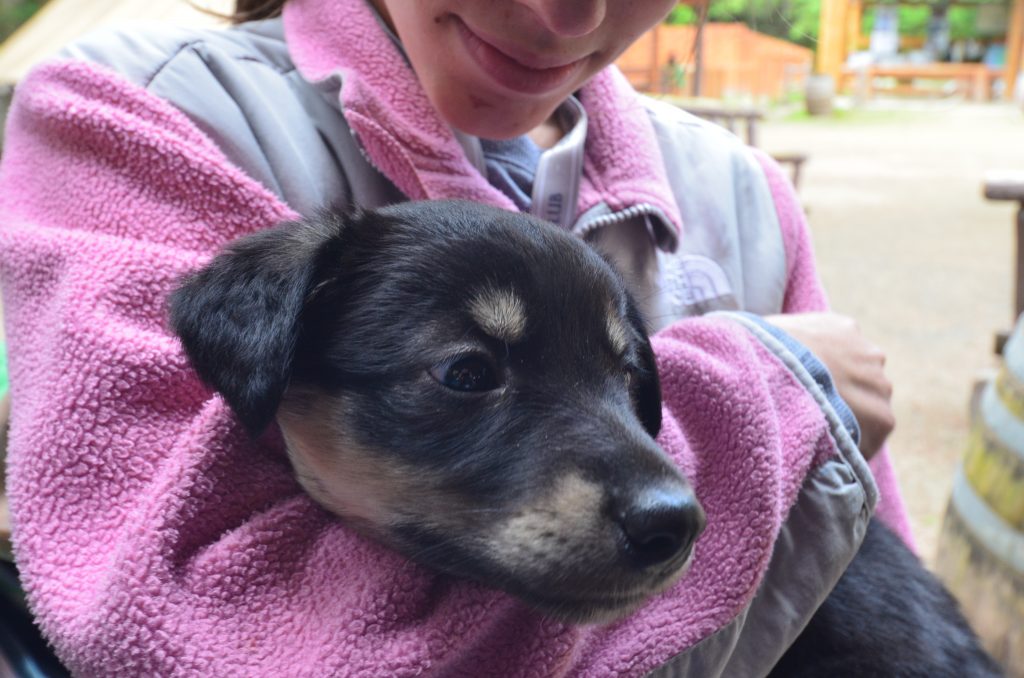It was Day 4 of our Alaskan cruise and we finally reached our first port of call at Skagway.
Everything I read described Skagway as a pioneer, western town from the 1890s. While that is true, nothing prepared me to feel so small as the vast AB Mountain, Face Mountain and others loomed nearby.
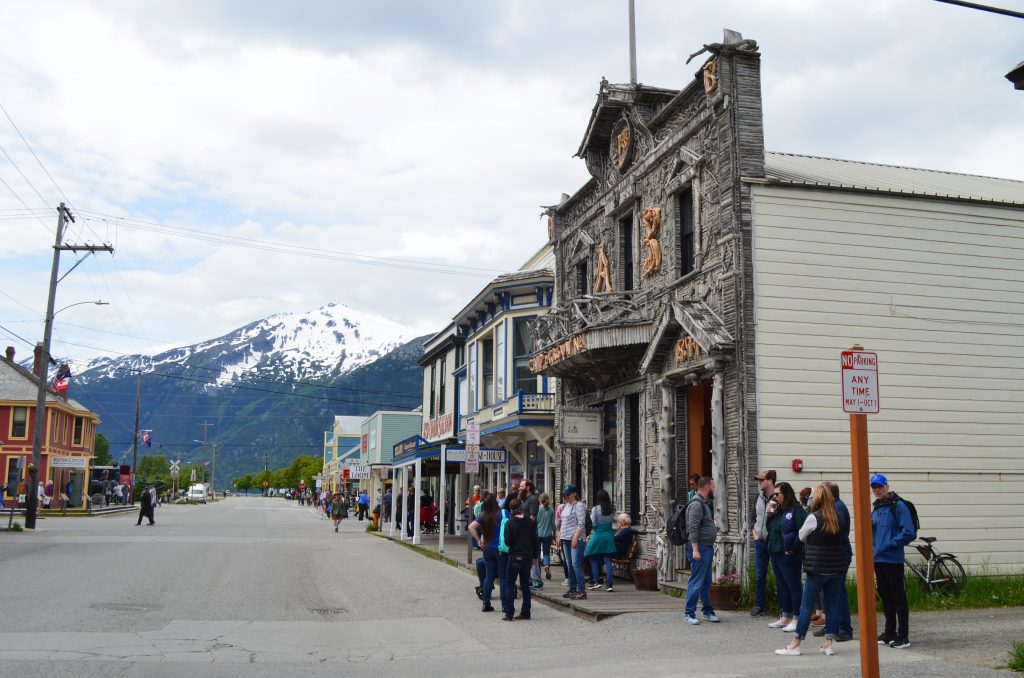
Skagway became popular during the Klondike Gold Rush between 1896-1899 and hosted saloons, brothels and anything you can imagine in a western town.
Klondike Gold Rush National Historical Park
Walking off our ship and crossing the railroad tracks, we entered the main district of Skagway. The flat, wide-open streets and 2-story wooden buildings resembled town sets from Gunsmoke and Bonanza; except for one thing – telephone poles – which reminded us we were in the present age.
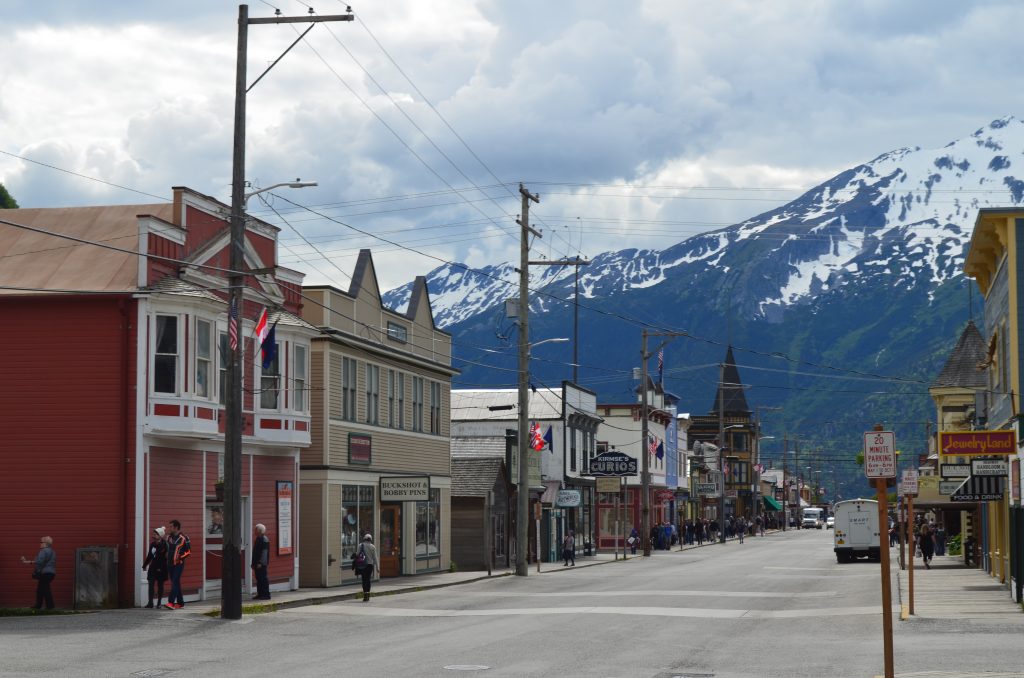
We stepped into the Klondike Gold Rush National Historical Park Visitor Center. During the 25-minute film, we learned that Skagway (Alaka’s largest town in the late 1890s) served as the gateway town for the Klondike Gold Rush. Over 100,000 stampeders would arrive from Seattle by boat, then traverse either the Chilkoot Trail or White Pass (both rugged and dangerous) to Lake Lindeman and Lake Benett. From tent cities there, they would build their own boats and wait for the icy waters to thaw before heading 500 miles on the Yukon River to the goldfields near Dawson. The journey could take up to two years and by then, prior prospectors had already found all the gold. However, the gold rush spurred the construction of the White Pass railroad in 1898 which kept Skagway on the map.
The Historical Park encompasses over 20 buildings in Skagway including Jeff Smiths Parlor and Goldberg Cigar Store. To see how a real family lived, we toured the Historic Moore Homestead a few blocks north of the visitor center.
A father-son duo, Captain William Moore and his son Ben, traveled to Skagway and homesteaded 160 acres, including the White Pass Trail, in anticipation of the gold rush. Later, Ben married a woman from the nearby Tlingit tribe and they raised their three children in this house next to the original sawmill he built. Although small, the house was filled to the brim with items showing they were among the wealthy in the town.
At the peak of the gold rush in 1898, Skagway had over 10,000 residents, several newspapers and even a college. However, by 1900, the town population dwindled to 3,100 and the Moores soon left to Washington state.
Besides the historical buildings, tourist shops and restaurants abound. After about two hours we were ready for our next acitivity.
Dog Sledding
We booked a 3-hour dog sled tour with Alaska Shore Adventures. Our guide met us at the ship, drove us through Skagway and took us outside of town where we could really appreciate the surrounding natural beauty.

Within 45 minutes, we arrived at the Musher’s Camp right as the sun came out from the clouds. At the campsite, we boarded a Unimog. Let’s just say its a fancy, open-air tour bus designed for rough terrain.
In 6th grade, my teacher forced our class to read, “Call of the Wild” by Jack London. I didn’t like that book since the main character, a sled dog, suffers abuse at the hands of several owners. I always had a distaste for dog sledding since then and didn’t know quite what to expect on this tour.
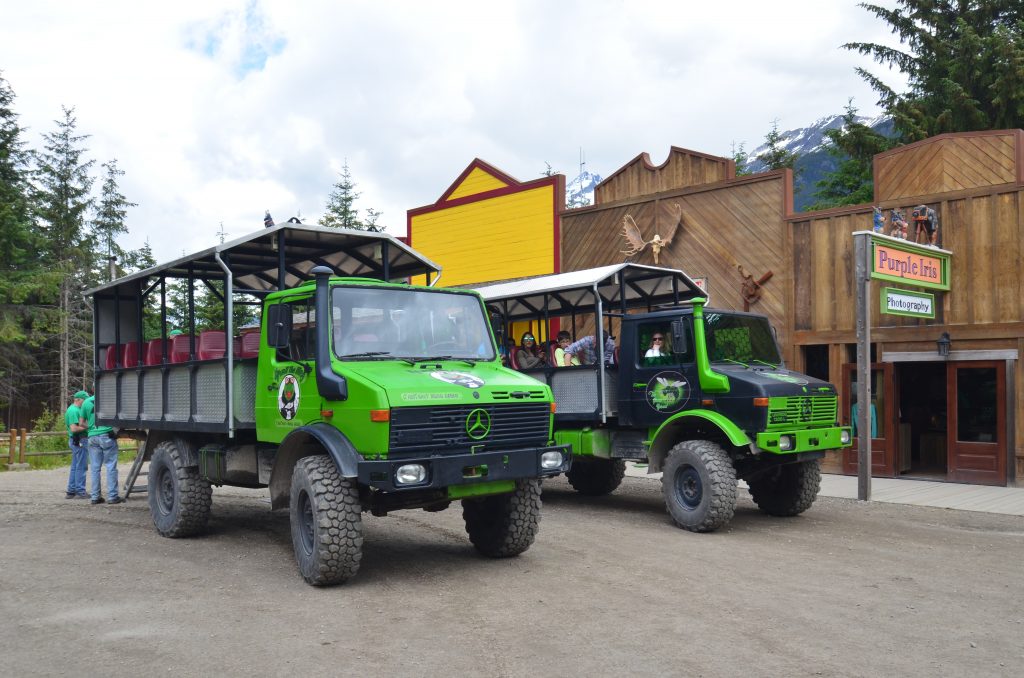
As the Unimog climbed up the mountain through lush green forests, I marveled at how it was such a different experience than the man-made town of Skagway not too far away.
After 15 minutes, we rounded a corner to the sounds of barking dogs. The dogs weren’t barking out of fear but out of sheer joy. They were happy to see us! Four teams of dogs hooked up to summer sleds (resembling an oversized golf cart with multiple rows) greeted us with wagging tails and they were ready to go.

Our musher climbed on the back of our sled and gave several commands to the dogs. They went in unison to pull us on a one-mile trail. She explained the importance of teamwork between the dogs and that their temperaments play a large role in the dogs’ selection to the team. The dogs train from October to April but take a “vacation” during the summer. To stay active and in shape, they often lead tour groups like us.
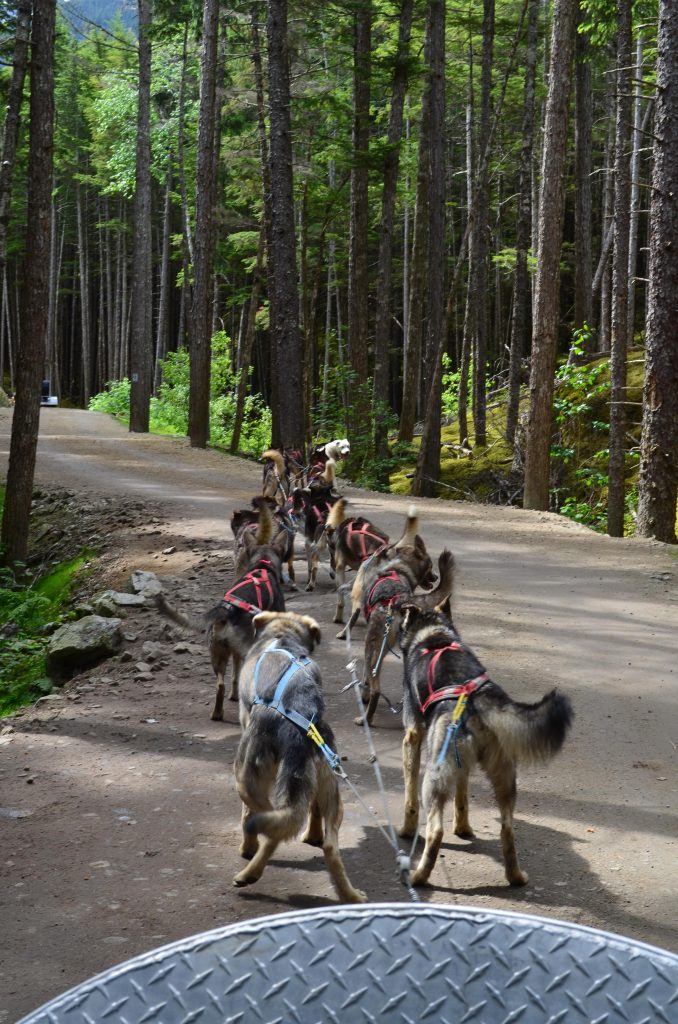
Back at the campsite, another guide explained the history and intricacies of dog racing including the grand-daddy of them all – the Iditarod. My view of dog sledding completely changed for the positive as I realized these dogs want to run (sometimes 100 miles before taking a break) and they’re happiest in sub-freezing temperatures.
A huge highlight for us was playing with the huskey puppies. Since sled dogs are trained at a young age, they need socialization with humans. We had to stay out of eyesight of the mama dog who guarded her pups while the workers gathered puppies and handed them to us. They climbed on us, nibbled our fingers with their sharp puppy teeth and wagged their tails. Before we knew it, we had to board the van back to town.
Lower Dewey Lake
Skagway offers multiple hiking trails and we chose to explore Lower Dewey Lake since it was one of the shorter trails. Starting on the eastern side of the town, we followed the railroad tracks to the trailhead.
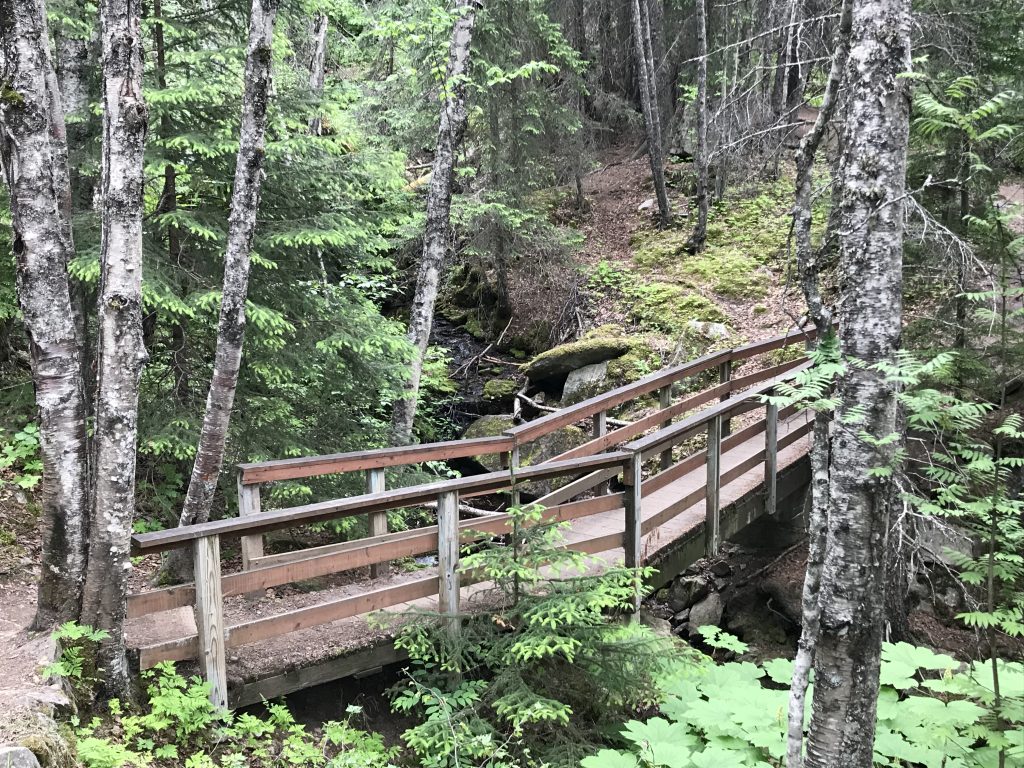
The trail ascended to a viewpoint looking over the town and into the harbor (see cover page.) We then descended in a lush green woodland for another 0.5-mile until we got to the lake.
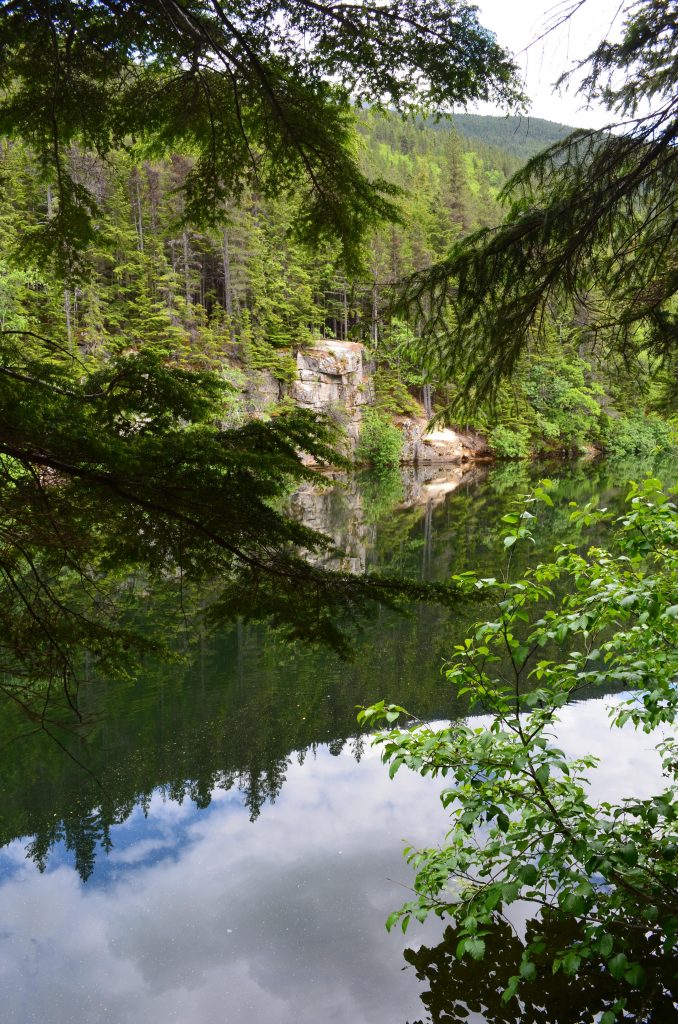
If we had more time before our ship departed, we would have completed the entire loop. However, we walked another half-mile or so before turning back. On the trail, we met several hikers from New York that were traveling on the Holland America cruise and compared notes about their cruise.
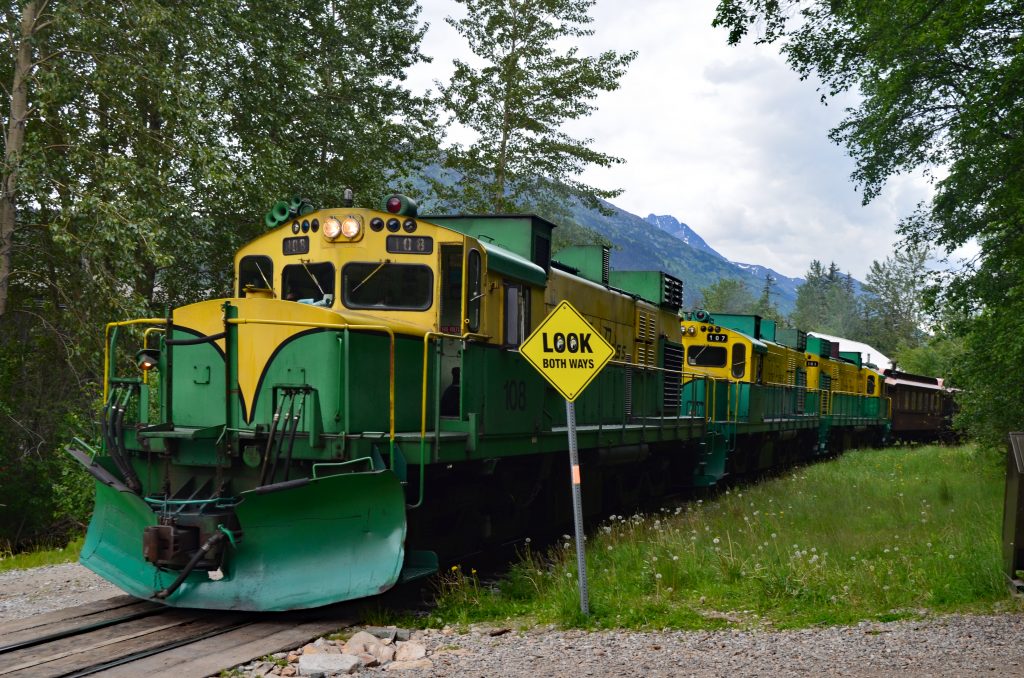
I wish we could have taken the railroad to White Pass Summit. I read the route ascends almost 3,000 feet and passes waterfalls and other scenic vistas. However, we couldn’t have fit one more thing in our day.
